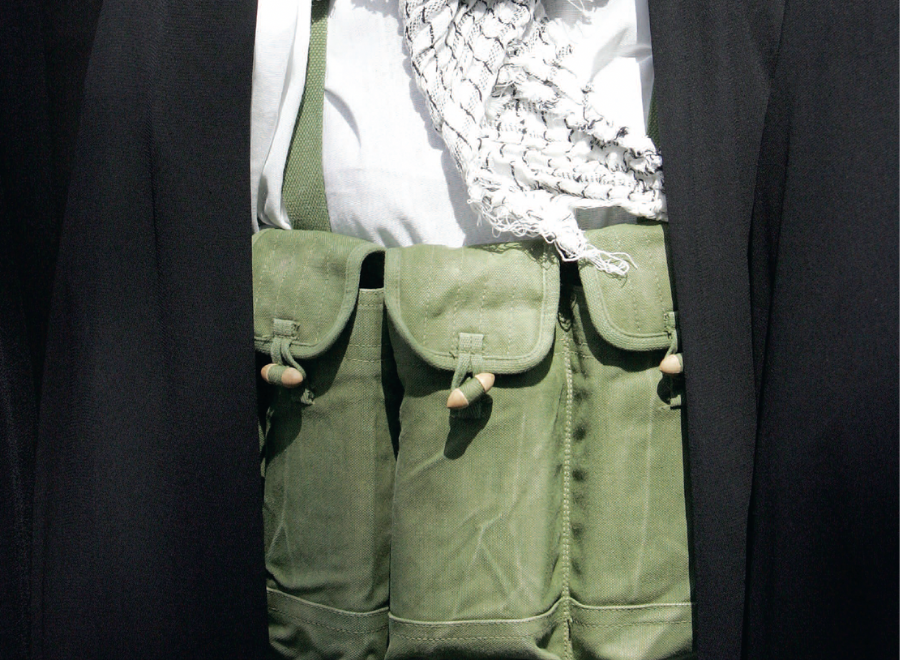When I was in grade school, “Blink And You’re Dead” was a staring game. Now, it’s no joke. The coverage of Pakistani politician Benazir Bhutto’s assassination last December drove home the reality that life can end in a blink. One moment, Bhutto’s supporters chant adulations and vigorously jostle her motorcade; the next, they stagger in a filthy daze. Twenty are dead.
Sadly, this carnage has become familiar. Thirty-one countries have seen it first-hand. Armed guards are posted outside hotels in Indonesia. Iraq is littered with checkpoints. A 720-km-long fence is being constructed along Israel’s green line. Next year, completing a 53-part security questionnaire will become protocol for anyone entering or exiting Britain.
You may unsubscribe from any of our newsletters at any time.
Despite the increased security, suicide terrorism is exploding. In the 1980s, there was an average of 4.7 suicide bombings per year. In 2006, there were 350 suicide bombings in Afghanistan alone.The basic recipe (gunpowder, cable, mercury, acetone, a battery, cable, light switch, nails or ball bearings) hasn’t changed much, but the packaging has. Gone are the duffle bags of old. Bhutto’s bomber, identified as Saeed, alias Bilal, wore a slick vest. His conspirators sound very blue collar: “driver,” “supplier,” “distributor,” “handler.”
Back in the 1980s, when suicide terrorism was in its infancy, it was assumed that all terrorists ticked alike. They were considered psychologically deranged, economically deprived, religiously fanatical and uneducated. Now, research has challenged these assumptions and deeper questions are being asked about how religion plays into the mix.
From 1996 to 1999, Nassra Hassan, a Pakistani Muslim, was an international relief worker posted in the Gaza Strip. She began collecting first-hand accounts from foiled suicide bombers, their families and the leaders who trained them. Hamas and Islamic Jihad welcomed the interviews so that, as one member told her, “you can explain the Islamic context of these operations.” There was one condition: Hassan was instructed not to use the term “suicide” missions in the interviews. The preferred term was “sacred explosions.”
From the 250 accounts she gathered, Hassan found that many suicide bombers were middle class and employed. None were uneducated or depressed. The young men “ranged in age from 18 to 38. Most were bearded. All were deeply religious,” wrote Hassan in an article for the New York Times. The religious connection was no surprise because “Islam” and “militant” were already being linked, prejudicial attacks against Muslims worldwide were being reported and many Muslim leaders were arguing that terrorist activity is at odds with the peaceful character of Islam.
While 31 of 34 groups that have carried out suicide operations claim to be Islamic, thanks to groundbreaking work like Hassan’s, the nature of the religious motivation came under review. One of the observations is that superficial assumptions about “Islamic fundamentalism” have resulted in blaming the Muslim faith for suicide terrorism and clouded rational analyses of how religion itself is being manipulated.
Now, many scholars believe that suicide terrorism is less individual than organizational, that in order to combat religiously motivated terrorism, it’s more important to understand how recruiters use it. Among other things, religion is used to raise operating funds, recruit new members, reinforce the us-versus-them worldview and prevent bombers from getting cold feet.
Take “martyrdom videos.” Surrounded by ammunition and raising a Qur’an, the suicide terrorist bids family and friends well, and claims that Allah has inspired him, or increasingly her, to jihad. But once the mission has been “successful,” this last will and testament becomes more promotional than memorial. It’s aired on popular television shows, in schools and mosques supported by the organization and at martyrdom festivals hosted by it.
Leaders and recruiters are masters at drawing a religious smokescreen over a political agenda. Robert Pape, a political scientist from the University of Chicago, compiled a database of suicide bombings around the globe from 1980 to 2003. In his bestseller Dying to Win: The Strategic Logic of Suicide Terrorism (Random House), Pape claims that 90 percent of suicide bombings are motivated by a single purpose: to compel modern democracies to withdraw military forces from places that the terrorists consider to be their homeland. “There had never been a documented suicide attack in Iraq until after the American invasion in 2003,” writes Pape.
Whether religion is a smokescreen or not, a generation ago, none of the world’s 11 major terrorist organizations was religiously affiliated. Now, Bruce Hoffman, a professor in the security studies program at Georgetown University says, “The religious imperative is the most defining characteristic of terrorist activity today.”
Yet, it’s hard to tell where psychological, political, cultural and economic motivation ends and religious motivation begins; religion is easy to hijack.
Nearly all religions have been used to justify “holy wars.” Christians have committed ghastly atrocities in Jesus’ name. Martyrs have long had a free pass through the pearly gates. So, what’s the sudden attraction?
Dr. Mark Juergensmeyer, an expert on religious violence, conflict resolution and politics and the author of Terror in the Mind of God: The Global Rise of Religious Violence (University of California Press), says religion turns violent when marginalized people become convinced that the cosmic battle between good and evil has manifested itself on Earth.
According to Juergensmeyer, there are no innocent victims in this worldview because everyone’s seen as an actor. Terrorists not only expect retaliation, they thrive on it. “In an eerie kind of way, the language of a ‘war on terrorism’ buttresses the reality of those who espouse acts of terror,” claims Juergensmeyer. “The more that we can resist appearing like the evil enemy that the Bhindranwales and bin Ladens of this world say that we are, the better off we are in diffusing the vicious spiral of violence and dissipating images of cosmic war.”
In March 2005, Juergensmeyer was one of more than 200 scholars and global leaders who attended the International Summit on Democracy, Terrorism and Security in Madrid, Spain. There, 16 expert-stacked working groups compared notes. Their conclusions largely called for social justice.
Director of the Radcliffe Institute at Harvard University, Louise Richardson offered a synthesis of the underlying causes of terrorism that sounded almost like a sermon: “We can impede entrance into and facilitate exit from radical groups. We can sow dissent among the radicals. We can mobilize the moderates. We can integrate the marginalized. We can educate our public in the traditions of the many cultures in their midst. We can develop societal resilience to terrorist threats. We can mitigate the impact and violence of rapid socio-economic changes. We can do much more.”
WIDELY REGARDED AS THE WORLD’S LEADING EXPERT on suicide terrorism, Ariel Merari, head of the Center for Political Violence at Tel Aviv University, has been studying terrorism from the front line for 30 years. On the phone, he speaks with precision: “When I first began interviewing suicide terrorists, I was surprised to learn that the phenomenon is more complex, more complicated than I had originally hypothesized.” Merari begins to say that group pressure and societal endorsement are strong influences in the proliferation of suicide terrorism when the interview is interrupted. Two voices break in. They sound urgent, intense, frightened.
“Is everything okay?” I ask. After a few moments, Merari comes back on the line: “Terrorists have entered a yeshiva across from my father-in-law’s place. We need to cut this off now.”
CNN shows mayhem in the streets of Jerusalem: stretchers, police, sirens, screams. A suicidal terrorist has opened fire in a Jewish seminary. Seven people are thought to be dead, several more wounded. It is rumoured that a second terrorist was seen wearing a suicide belt. Reports are not yet confirmed.
And then there’s another breaking story: A suicide bomber has entered a well-known shopping district in Karrada, Baghdad. It appears that 53 people have been killed, 123 injured.
CNN flashes between the two stories. An hour after I hang up with Merari, I realize I’m shivering and still holding the phone. In a blink, suicide terrorism has hit home.
***
This story first appeared in The United Church Observer’s May 2008 issue with the title “Hijacking religion.”













